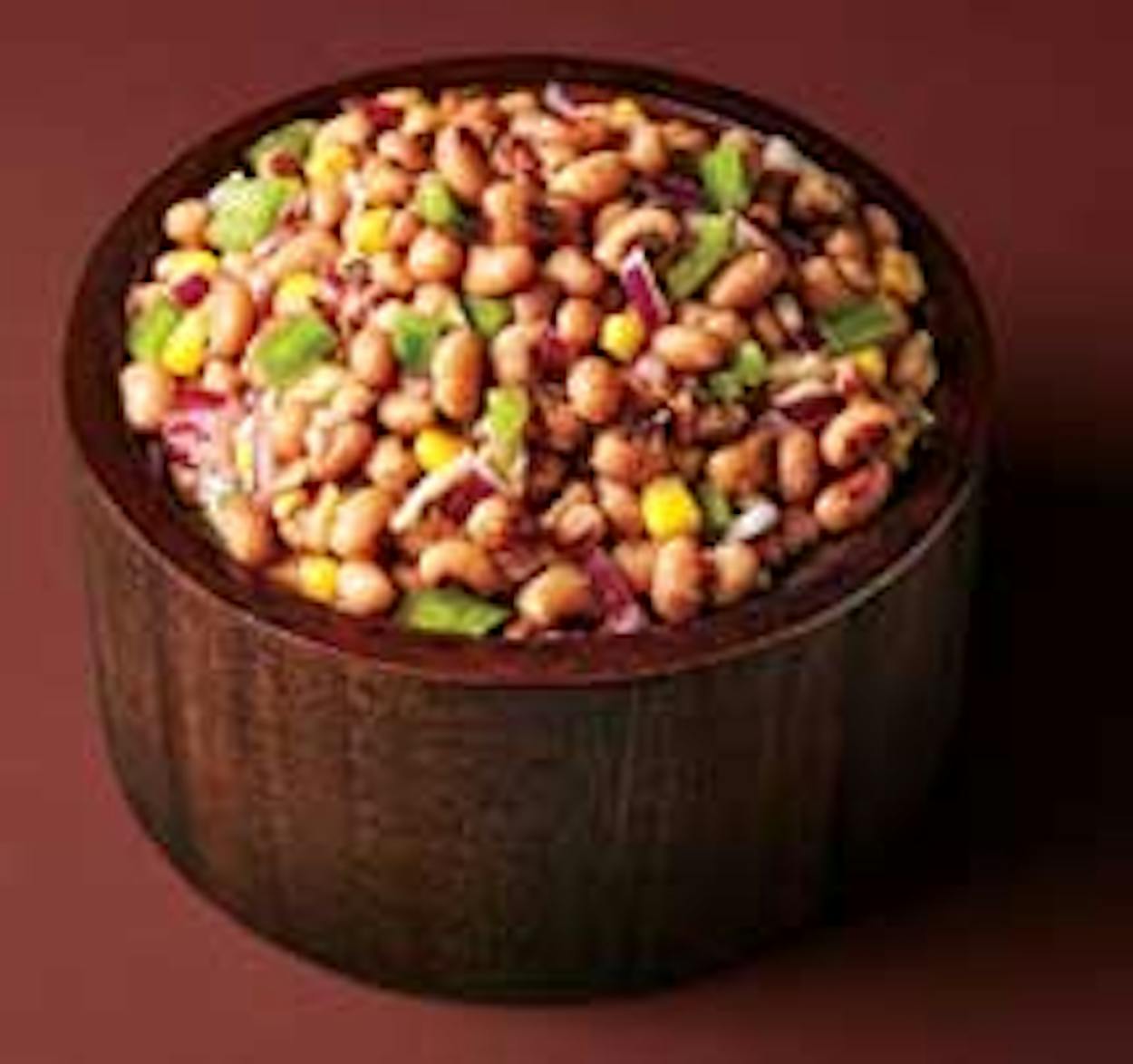On New Year’s Day superstitious Texans take out a symbolic insurance policy by helping themselves to a heap of black-eyed peas—a practice that, according to tradition, guarantees one lucky day for each pea consumed. No one knows for certain how this ritual started, but one theory is rooted in horticulture: When planted, the legume replenishes the nitrogen content of soil and improves growth conditions, and thus the pea can be held responsible for the fortune of bountiful crops. To ensure prosperity, many Southerners eat the cowpeas hoppin’ John—style—boiled with a ham hock and served over rice—but a thoroughly native way to get them down is to polish off a bowl of Texas caviar. Helen Corbitt, who reigned as Neiman Marcus’s head chef for seventeen years, invented the dish in 1940, when she was asked to write a menu using only Texas products. At a loss for an acceptable recipe starring the peas that she admittedly didn’t like, she decided to pickle them in oil and vinegar with garlic and onions and unwittingly produced what would become one of her most well-known creations (it was so popular that Neiman Marcus later canned and sold it in stores). Modern variations of the dish now feature diced green bell peppers, corn, and cilantro, but this is her original recipe. Best of luck!
Recipe: Pickled Black-eyed Peas
2 fifteen-ounce cans cooked black-eyed peas
1 cup salad oil (modern palates may prefer less oil; start with 1/4 cup and add more to taste)
1/4 cup wine vinegar or more, to taste
1 whole garlic clove
1/4 cup thinly sliced onion
1/2 teaspoon salt cracked or freshly ground black pepper
Drain liquid from the peas. Place peas in a bowl, add remaining ingredients, and mix thoroughly. Store in a glass jar in refrigerator and remove garlic bud after one day. Store at least two days and up to two weeks before eating. You’ll need a plate and fork for these.
- More About:
- How to be Texan








